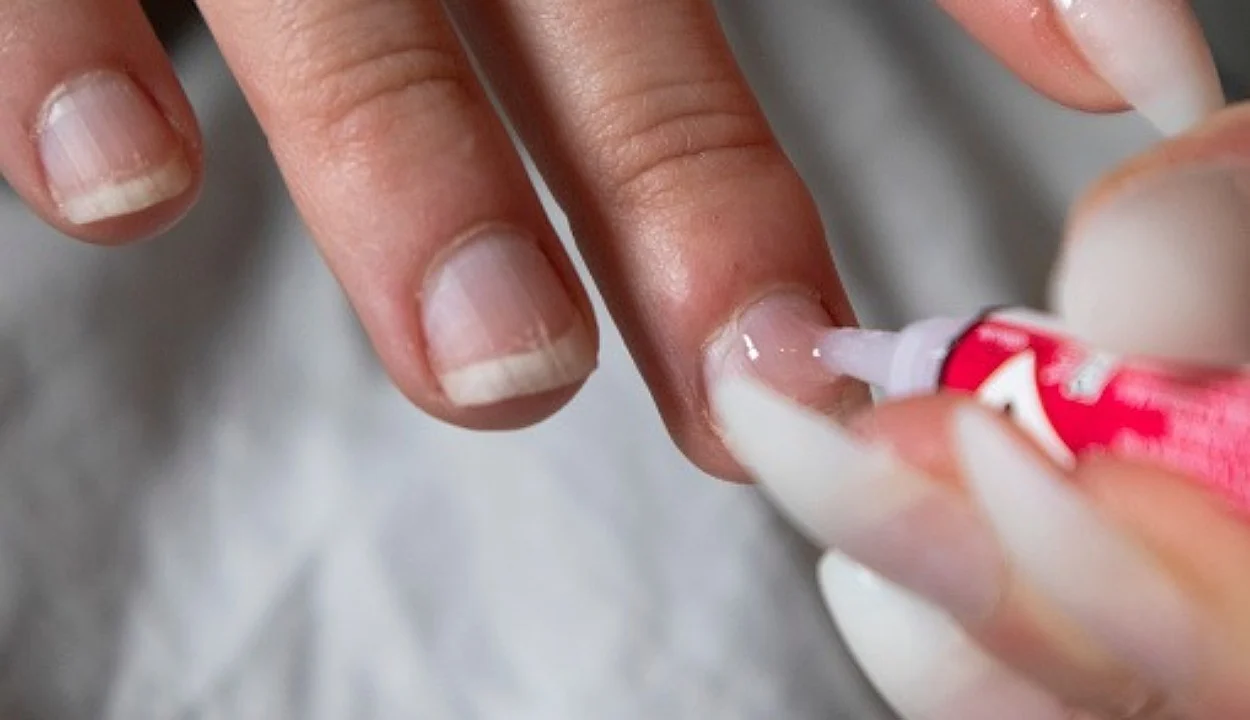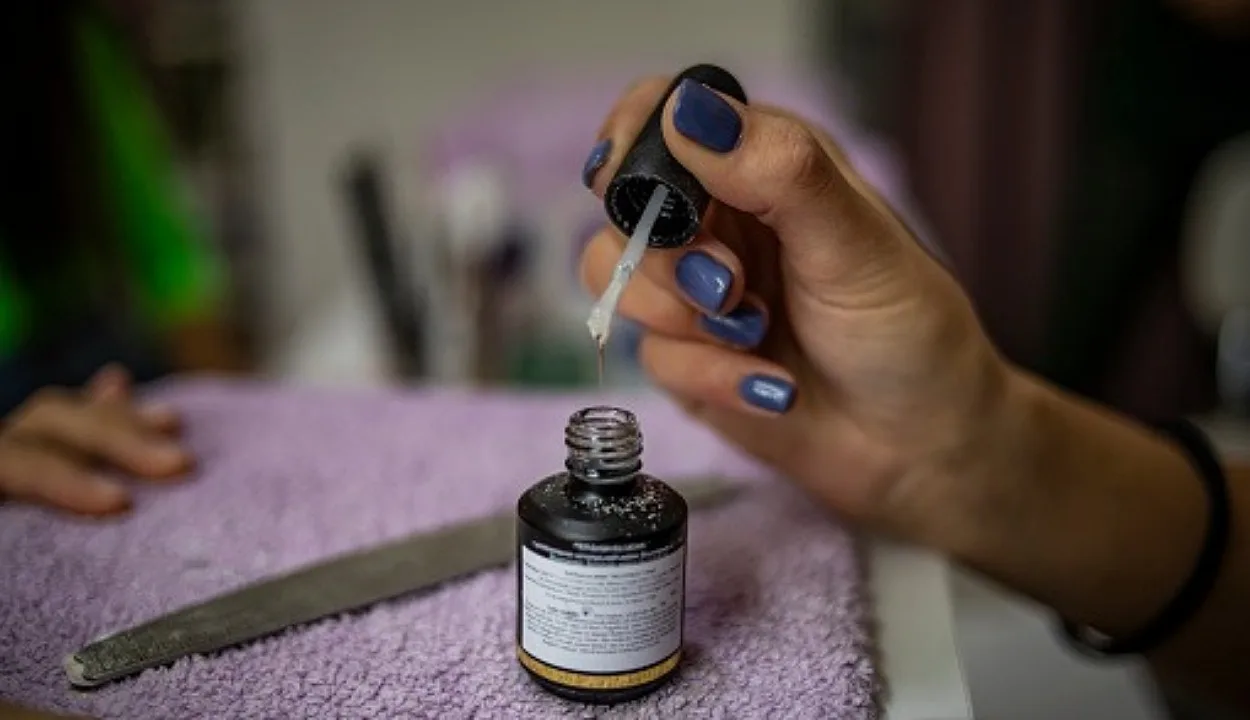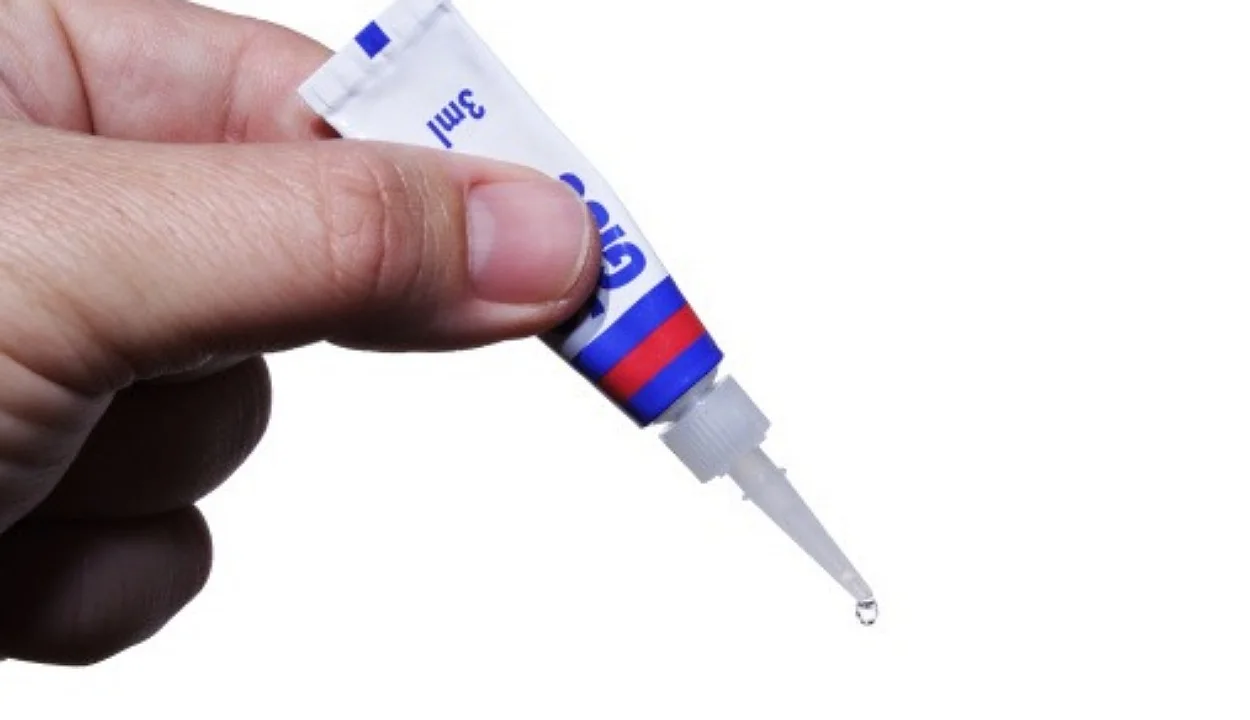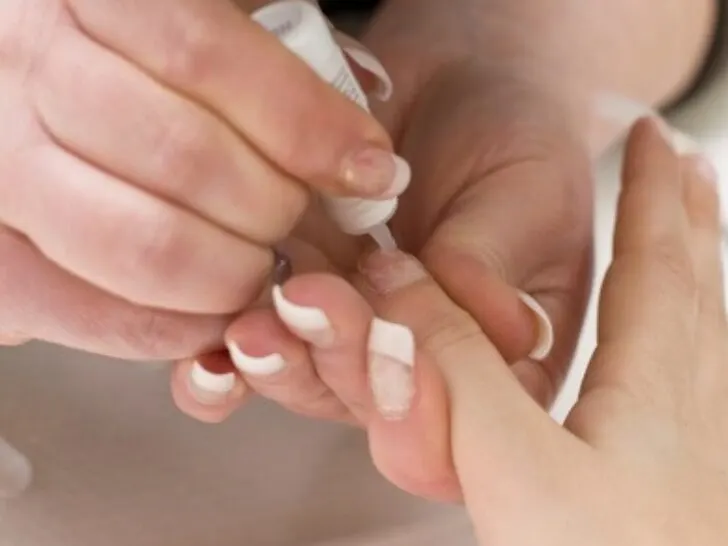Nail glue is an effective tool for attaching fake nails and healing broken or split nails. Nail adhesive, when used and cared for properly, can offer a strong and long-lasting hold for artificial nails.
Super glue is a strong, fast-drying adhesive often used for home repairs, crafts, and hobbies. Use it carefully and according to the manufacturer’s directions to ensure safe and effective use.
Super glue and nail glue are types of adhesives; they are made for different uses and have other characteristics.
Super glue dries and cures quickly, while nail glue dries fast but may take longer to fix fully. Although less powerful than super glue, nail glue is simpler to remove from flesh.

What Is Nail Glue?
Nail glue is an adhesive specifically created to connect artificial nails to natural nails, such as acrylic or gel.
It is a powerful, fast-drying glue that may adhere the artificial nail to the natural nail, resulting in a secure and long-lasting hold.
Typically, nail glue comes in a tiny bottle with a brush applicator. The natural nail is glued, then the artificial nail is pushed onto the natural nail and held in place until the adhesive dries.
By adding a tiny amount of adhesive to the afflicted region and having the nail together until the glue dries, nail glue can also be used to repair broken or split nails.
The most common ingredient in nail glue is cyanoacrylate, a super-strong, fast-drying adhesive.
Moreover, cyanoacrylate is frequently employed in various fields, including the construction sector and the production of medical devices.
To guarantee that the fake nails are firmly attached and to prevent any harm to the natural nails, nail glue must be applied correctly. It is advised only to use a tiny amount of glue and to keep it away from the skin and cuticles because it may irritate or harm them.
Also, it’s crucial to refrain from applying nail adhesive to cracked or infected nails because it could exacerbate the problem.
What Exactly Is Super Glue?
Super glue, commonly known as cyanoacrylate adhesive, is a strong, fast-drying adhesive used in various applications. It is widely used in home repairs, crafts, and hobbies, as well as in medicine and dentistry.
Superglue forms a chemical link between two surfaces. As the glue comes into touch with moisture, such as moisture in the air or moisture on the surfaces to be bonded, it begins a chemical reaction that allows it to harden and form a strong, permanent connection.
Superglue can bond various materials, including plastic, metal, wood, leather, and ceramics.
It’s crucial to carefully follow the manufacturer’s instructions and exercise the recommended safety measures when using super glue. Avoiding superglue on your skin or your eyes is critical because it can bind your skin and eyes.
The Distinction Between Nail Glue and Super Glue
Both nail glue and super glue are adhesives that serve various functions.
Nail glue primarily comprises cyanoacrylate, a fast-drying, super-strong adhesive. Conversely, super glue is created from cyanoacrylate, but it may also contain other compounds to change the viscosity or drying time.
While these two types of glue may appear similar, there are numerous significant distinctions between them.
Purpose Of Nail And Super Glue
To connect acrylic or gel nails to natural nails, nail glue was specifically created. Moreover, it is applied to fix split or broken nails. On the other hand, the wide range of uses for superglue includes crafts, hobbies, and home repairs.

Strength Of Nail And Super Glue
Nail adhesive provides artificial nails with a firm and long-lasting grip. It may not be as strong as super glue, but it is known for its capacity to join various materials such as plastic, metal, and wood.
Drying Period Of Nail And Super Glue
Although nail glue is made to dry rapidly, the curing process may take longer.
As a result, even though the glue may seem dry on the surface, it might only properly adhere after several hours. Contrarily, super glue cures and dries quickly, typically in a matter of seconds.
Removal Of Nails And Super Glue
Nail paint removers are commonly used to remove nail glue. On the other hand, Super glue is far more difficult to remove and may necessitate specialized solvents or abrasives to dissolve or break down the connection.
Skin-To-Skin Contact
When nail glue and super glue touch skin and eyes, they can bond together. Yet, nail glue is less likely than super glue to attach to the skin and can be removed more readily if it does.
Is Super Glue Nail Safe?

No, super glue should not be used on nails. It can cause nail damage and, in some situations, infection. It’s not a major worry if it touches healthy skin, but if it gets into your cuticles or under your nails, it might cause problems.
Another reason super glue should not be used on nails is that it is difficult to apply precisely. Hold down the glued pin briefly until the glue dries and sticks.
You don’t want to use too much pressure on your nails because they are still delicate after soaking in water and can be easily broken.
Some Benefits And Drawbacks Of Nail And Super Glue
There are a few factors to consider when deciding between the nail and super glue.
| Benefits | Drawbacks | |
| Nail Glue | Nail adhesive is safe and effective for this purpose because it is made expressly for use on nails. | If you make a mistake or wish to change your manicure later, nail adhesive can be tough to remove. |
| As nail adhesive is typically clear, it won’t be as obvious if it goes on your skin. | It might harm your nails if applied too frequently or not properly removed. | |
| Super Glue | Superglue is affordable and widely available in stores. | Because super glue is not made expressly for use on nails, it may not work as effectively or be as safe as nail glue. |
| Super glue can be used for many things other than nails. | Compared to choices such as super glue, nail glue can be costly. |
Final Thoughts
- Despite the temptation to grab less expensive products for your skin and nails, it’s crucial to remember that they were made with those sensitive regions in mind.
- If something is sturdy enough to support a car, it probably isn’t delicate enough to break from a severe bang on a drawer, like your nails.
- Super glue and nail glue are types of adhesives; they are made for different uses and have other characteristics.
- Nail glue is an adhesive that connects artificial nails to natural nails, such as acrylic or gel.
- Super glue is a strong, fast-drying adhesive used in various applications. It is widely used in home repairs, crafts, and hobbies, as well as in medicine and dentistry.
Related Articles
- What Is The Difference Between 220V Motor And A 240V Motor? (Check Out)
- Black-Haired vs. White-Haired Inuyasha (Half-Beast And Half-Human)
- Reek In Game of Thrones TV Show vs. In The Books (Let’s Get Into Details)
- What Are The Differences Between The Light And Dark Side Of The Force? (War Between Right And Wrong)

